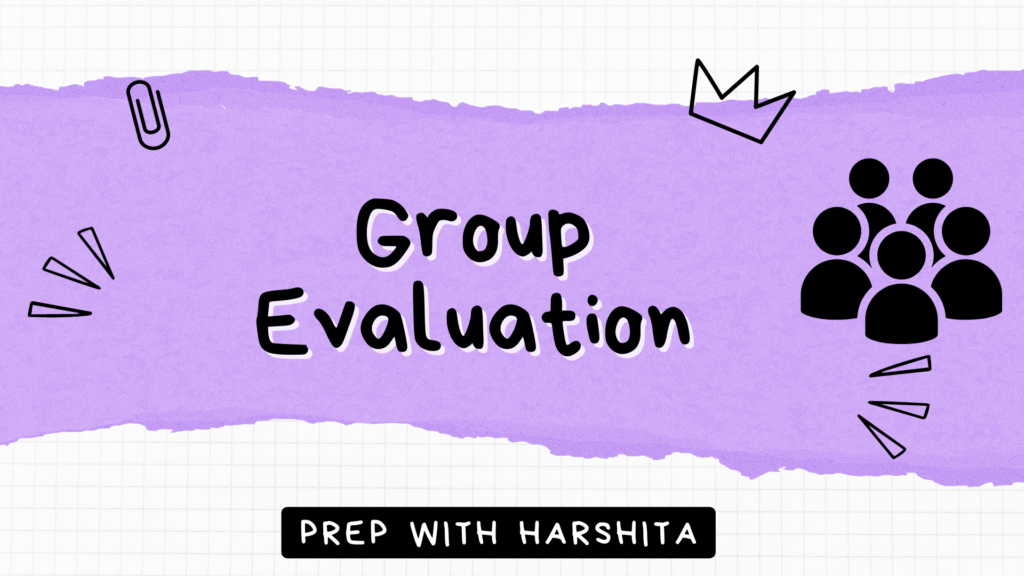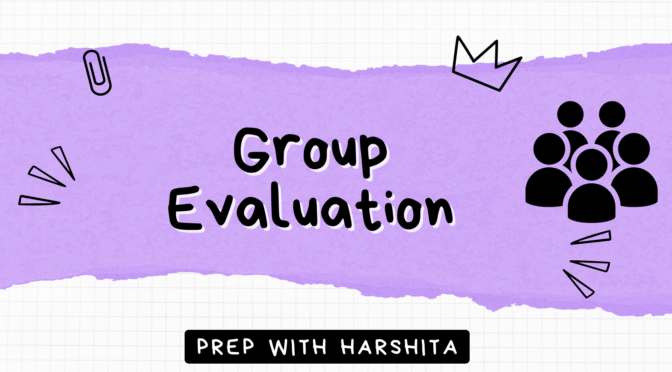Group evaluation in education refers to the process of assessing the performance, progress, and contributions of students within a group or team-based learning environment. It involves evaluating both the individual contributions of group members and the overall effectiveness of the group in achieving its goals.
Here’s a detailed explanation of group evaluation in education:
- Purpose of Group Evaluation: Group evaluation serves several purposes in education:
a) Assessing Individual Contributions: Group evaluation allows educators to assess the individual efforts, skills, and contributions of each student within a collaborative setting.
b) Promoting Accountability: It encourages students to take responsibility for their assigned tasks and encourages active participation in the group’s activities.
c) Enhancing Collaboration and Teamwork: By evaluating group dynamics and interactions, students develop essential collaboration and teamwork skills necessary for future endeavors.
d) Providing Feedback: It provides feedback to students on their strengths and areas for improvement, helping them develop a better understanding of their performance and learning.
- Criteria for Group Evaluation: When conducting group evaluations, certain criteria are typically used to assess individual and group performance. These criteria may include:
a) Task Completion: Evaluating how effectively group members fulfill their assigned roles, responsibilities, and tasks.
b) Contribution to Group Process: Assessing the level of active participation, engagement, and involvement of each group member in group discussions, decision-making, and problem-solving.
c) Collaboration and Communication: Evaluating the quality of interactions, communication, and teamwork within the group, including the ability to listen, provide constructive feedback, and resolve conflicts.
d) Quality of Work: Assessing the overall quality and completeness of the group’s final product, project, or presentation.
e) Time Management: Evaluating the group’s ability to meet deadlines, manage time effectively, and prioritize tasks.
- Assessment Methods: There are various methods for conducting group evaluations in education. These include:
a) Peer Evaluation: Group members assess and provide feedback on each other’s contributions and performance within the group. Peer evaluations can be done through rating scales, rubrics, or written feedback forms.
b) Self-Assessment: Students reflect on their own contributions, strengths, and areas for improvement within the group. They provide a self-evaluation of their performance and learning.
c) Teacher Observation: The educator observes the group’s interactions, processes, and final outcomes to assess individual and group performance. The teacher may also use checklists or rubrics to guide the observation process.
d) Group Evaluation Forms: The use of structured evaluation forms or questionnaires where group members rate themselves and their peers based on specific criteria and provide written feedback.
- Feedback and Reflection: It should be accompanied by feedback and reflection to enhance learning and growth. Feedback can be provided through written comments, one-on-one discussions, or group debriefings. Students are encouraged to reflect on their group experience, identify areas for improvement, and set goals for future collaborative work.
- Fairness and Equity: To ensure fairness and equity in this, it is essential to establish clear expectations and criteria at the outset. Educators should communicate the evaluation process and criteria transparently to all students. Additionally, implementing multiple assessment methods (such as peer evaluation, self-assessment, and teacher observation) helps provide a well-rounded and balanced assessment of individual and group performance.
Group evaluation in education provides students with opportunities to develop essential collaboration, communication, and teamwork skills. It promotes accountability, enhances critical thinking, and encourages reflection and self-assessment.
By assessing individual contributions and group dynamics, educators gain insights into students’ abilities, progress, and the effectiveness of collaborative learning experiences.
Also Read: Cloze Test

Also Visit: Prep with Harshita


Your style is unique in comparison to other folks I’ve read stuff from.
I appreciate you for posting when you have the opportunity, Guess I’ll
just book mark this page.
Pretty component to content. I just stumbled upon your site and in accession capital to claim that I get actually enjoyed account your
weblog posts. Anyway I will be subscribing in your augment
or even I achievement you get right of entry to constantly quickly.